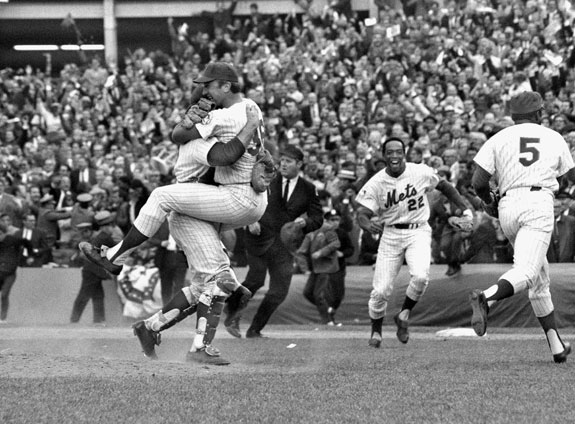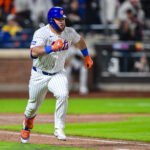
The current version of the Mets is poised to make last year’s disappointment an afterthought. If all things were equal, as in a full 162-game schedule, they’d have a great opportunity to join this list of the most substantial one-year improvements in team history.
What are the greatest one-year team turnarounds in Mets history? Let’s take a look.
Note: the 1982 season, which had a 24-win increase, is not included as strike-shortened 1981 consisted of 105 games.
1969: 27 wins better than ’68
The least surprising team here remains one of the great surprises baseball has ever seen. “Miracle Mets” is an applicable nickname in an alliterative sense, but it was more than celestial gods at work. There was brilliant pitching from Tom Seaver and Jerry Koosman, outstanding defense from Tommie Agee, Bud Harrelson, and Jerry Grote, and timely hitting from players like Cleon Jones.
None of that, though, would’ve been possible without the strong leadership of second-year manager Gil Hodges. Under his guidance, New York improved by 12 games with a franchise-best 73 wins and a ninth-place finish in 1968 — just the second time the Mets had reached such a height.
But it was nothing compared to what was to come. Showing signs of significant development by June, they acquired veteran Donn Clendenon before really taking off in August. 100 regular-season wins. A division title. A sweep of the Braves in the playoffs. And a five-game World Series triumph over Baltimore. Amazin’.
1984: 22 wins
The nucleus of a team that would take the World Series title two years later had pretty much come together. Certainly, this was the season of rookie Dwight Gooden captivating New York City and the baseball landscape. Doc struck out 276, had a 137 ERA+, and nearly won the Cy Young — at age 19. Darryl Strawberry, who preceded Doc in winning Rookie of the Year honors, showed more glimpses of his potential. Keith Hernandez, traded for in June ’83, was the experience new manager Davey Johnson could rely on to provide on-field leadership.
While the Chicago Cubs outlasted the Mets and took the NL East by seven games, everyone around the sport was convinced that the Mets — which won 90 and had a winning season for the first time since 1976 — were the team of the future.
1997: 17 wins
This may have been Bobby Valentine‘s best job as Mets manager.
Bobby V took over an underachieving club in the summer of ’96. And in this brief pre-Piazza era, he helped keep New York in the Wild Card race until the final week. Edgardo Alfonzo topped all players in bWAR at 6.2 with a .315 batting average and an on-base percentage that neared .400. Offseason trade acquisition John Olerud did have a .400 OBP along with 105 RBIs. Catcher Todd Hundley maintained his power and led the club in homers for the second straight year. Rick Reed was a replacement player as the strike leaked into the start of the ’95 season. By ’97, he was the Mets’ top starter. He had the highest ERA+ (141), the lowest WHIP (1.042), and the most innings of anyone in the rotation.
2006: 14 wins
A common theme of this group is new managers — either in their first or second full season. The trend continues here.
Willie Randolph debuted in 2005 and oversaw an 83-79 club that was 12 wins better than ’04. But there were many reasons why it could — and would — get even better. Carlos Beltrán rebounded from a rough start in New York and produced to his capabilities with a franchise-tying mark of 41 homers. Carlos Delgado was picked up from Florida and was an instant success as a middle-of-the-order presence. Then there was the continued growth of their two homegrown talents: David Wright and Jose Reyes. Together, they solidified the left side of the infield, with Wright matching Beltrán for most RBIs and Reyes leading the league in triples and steals.















